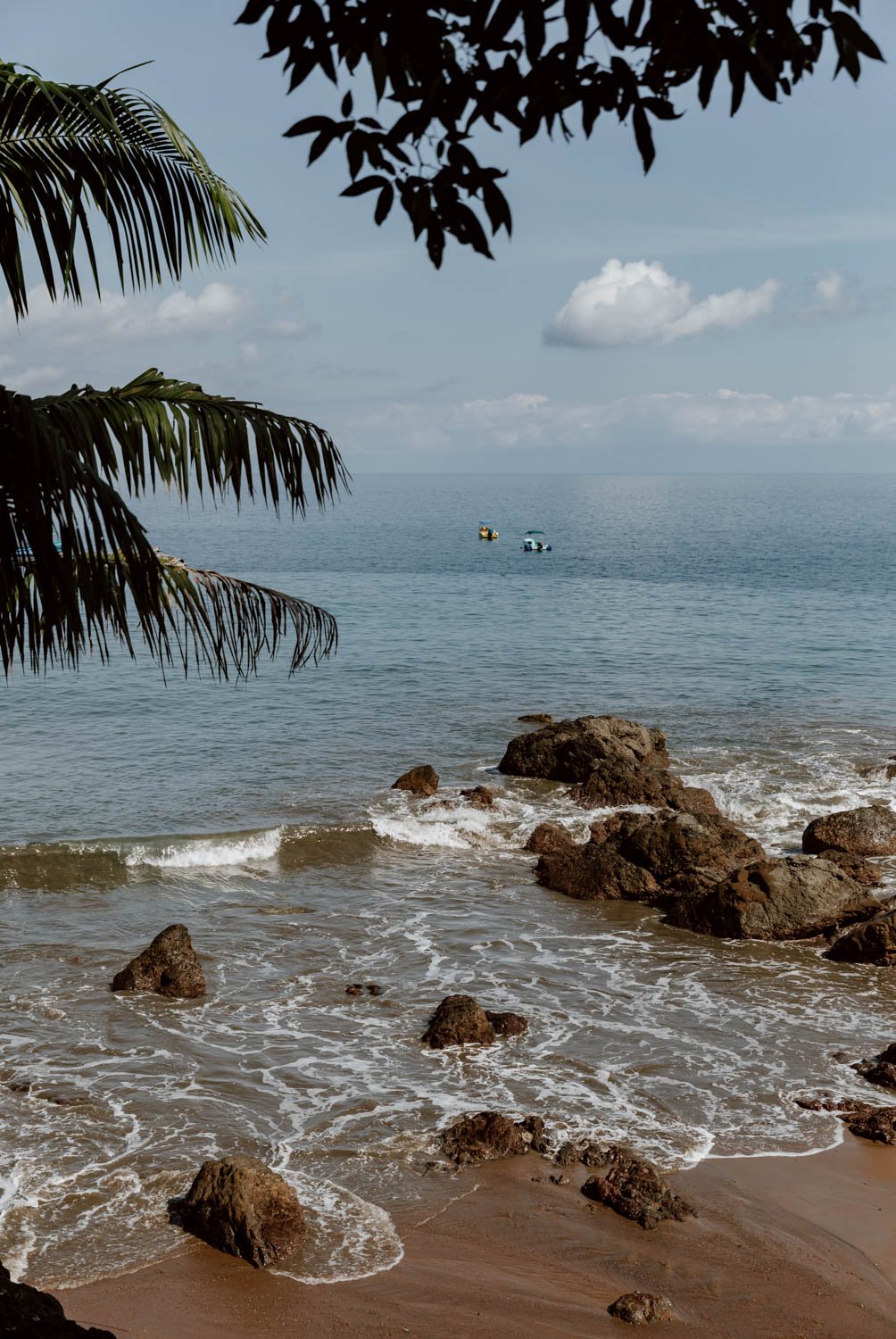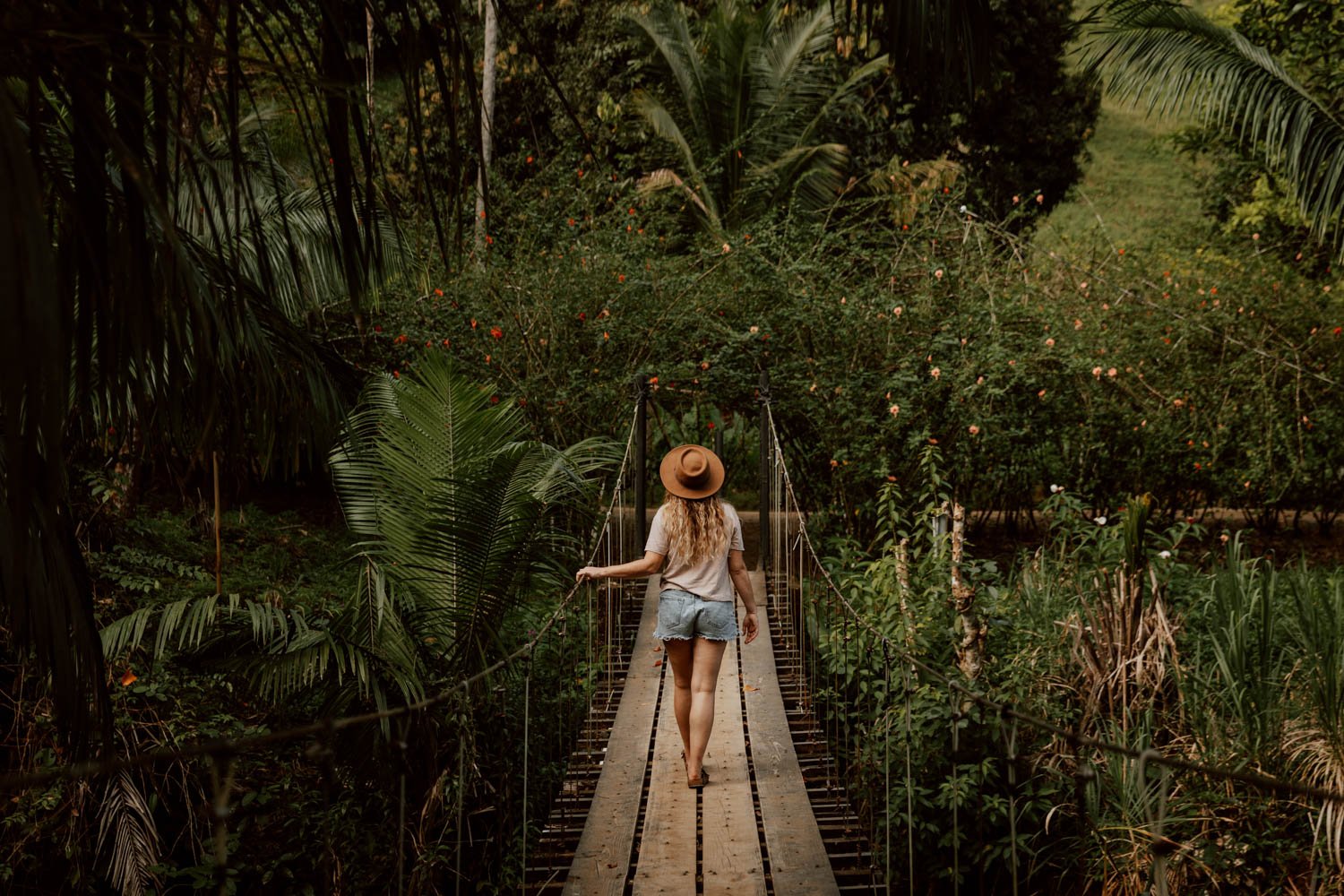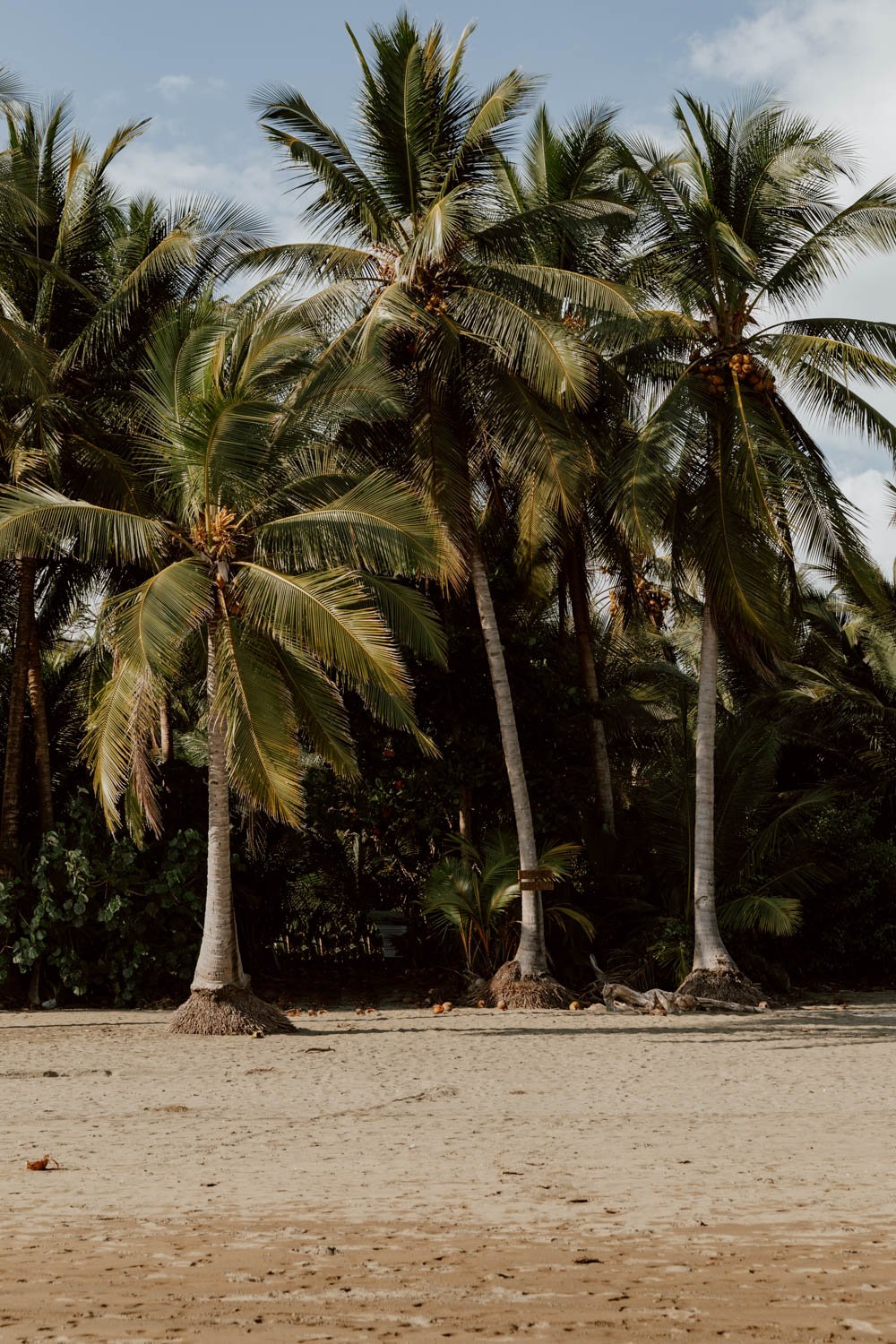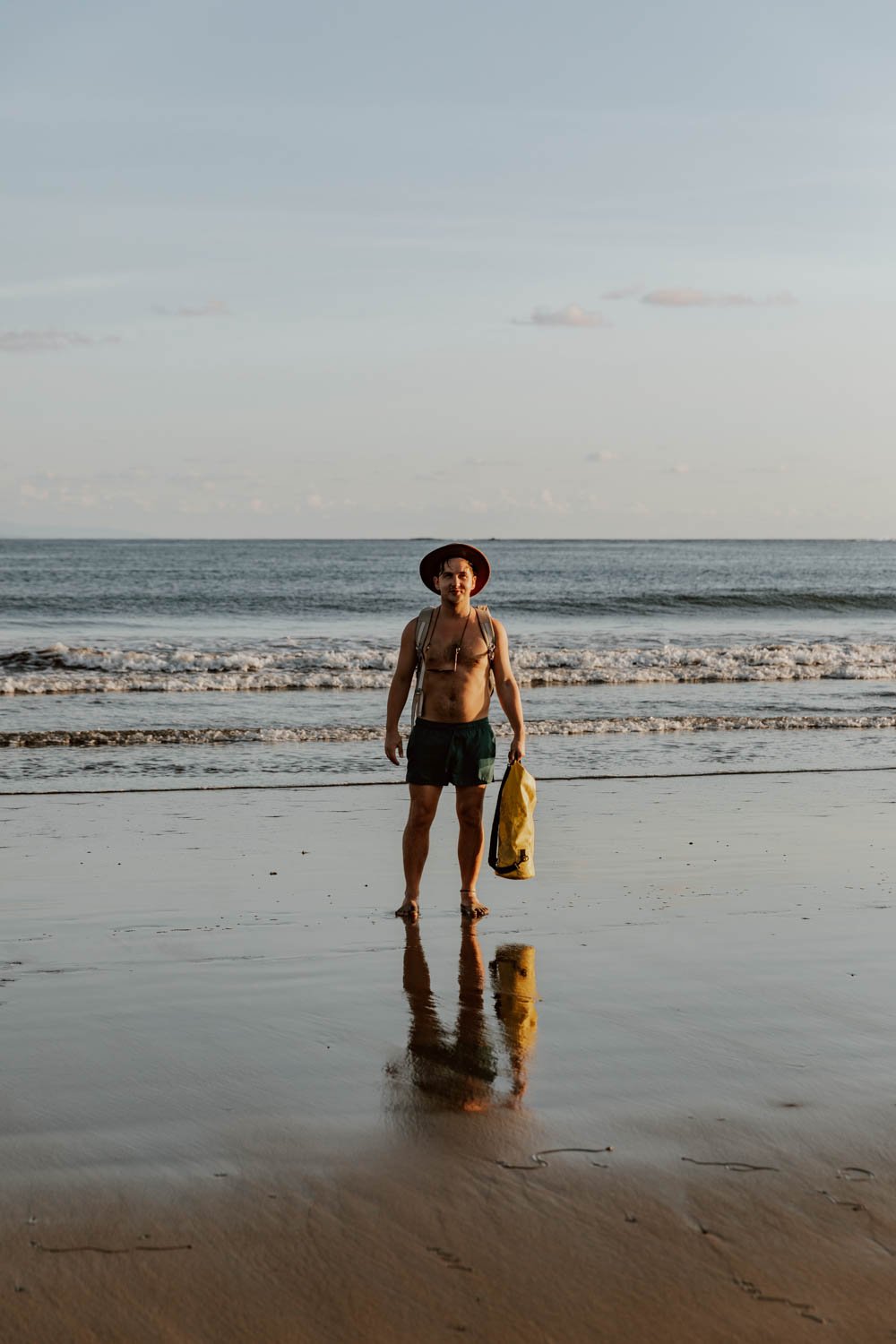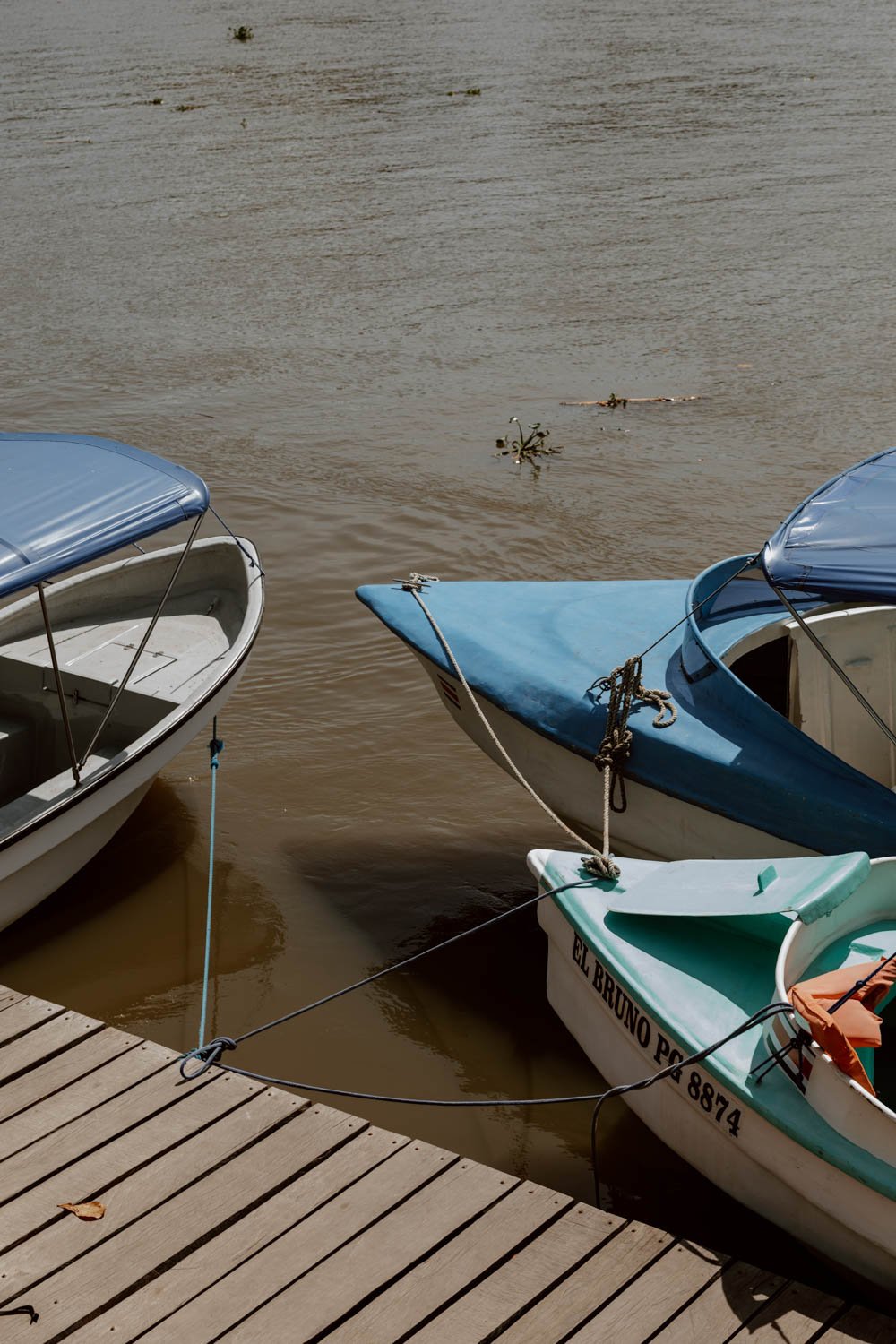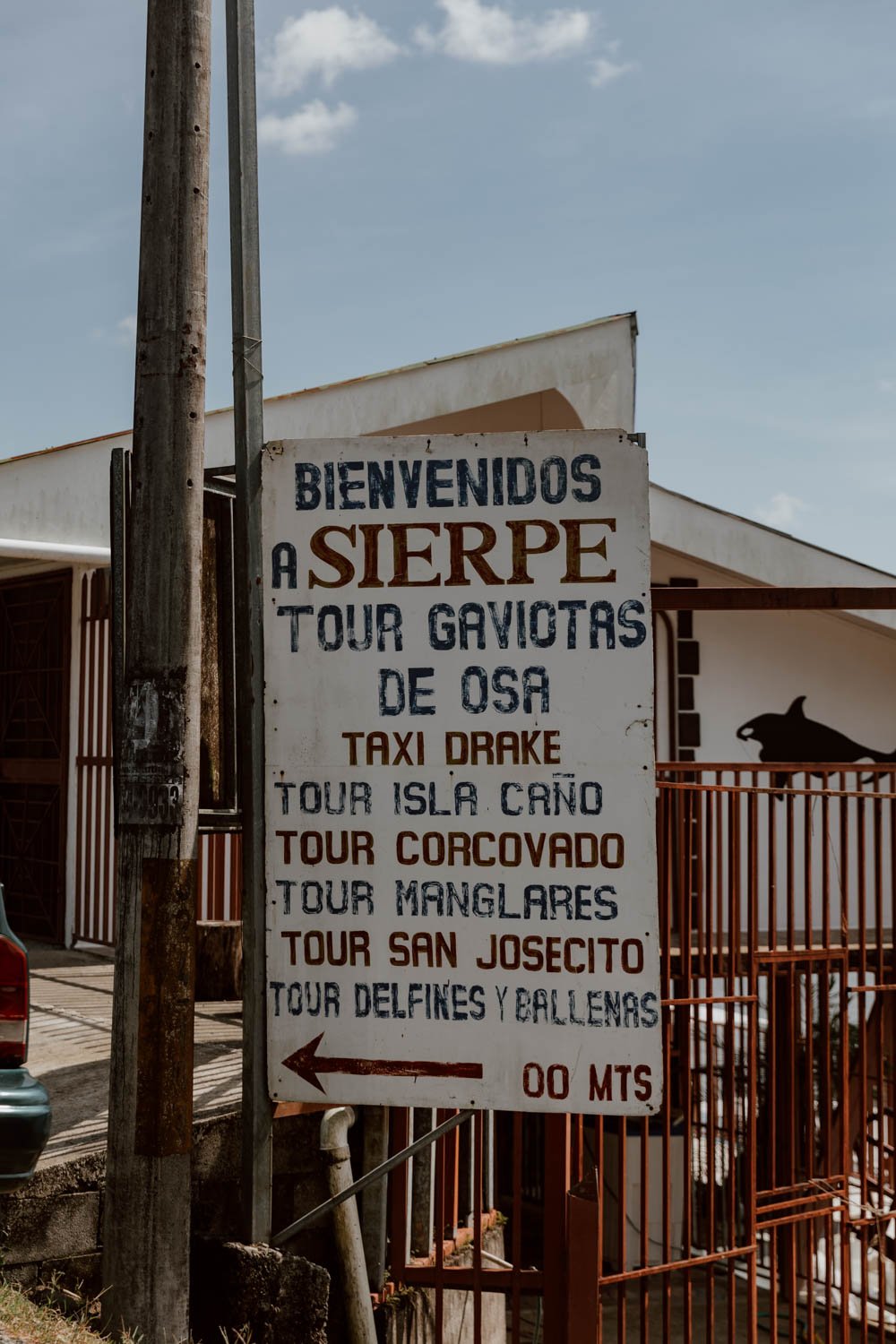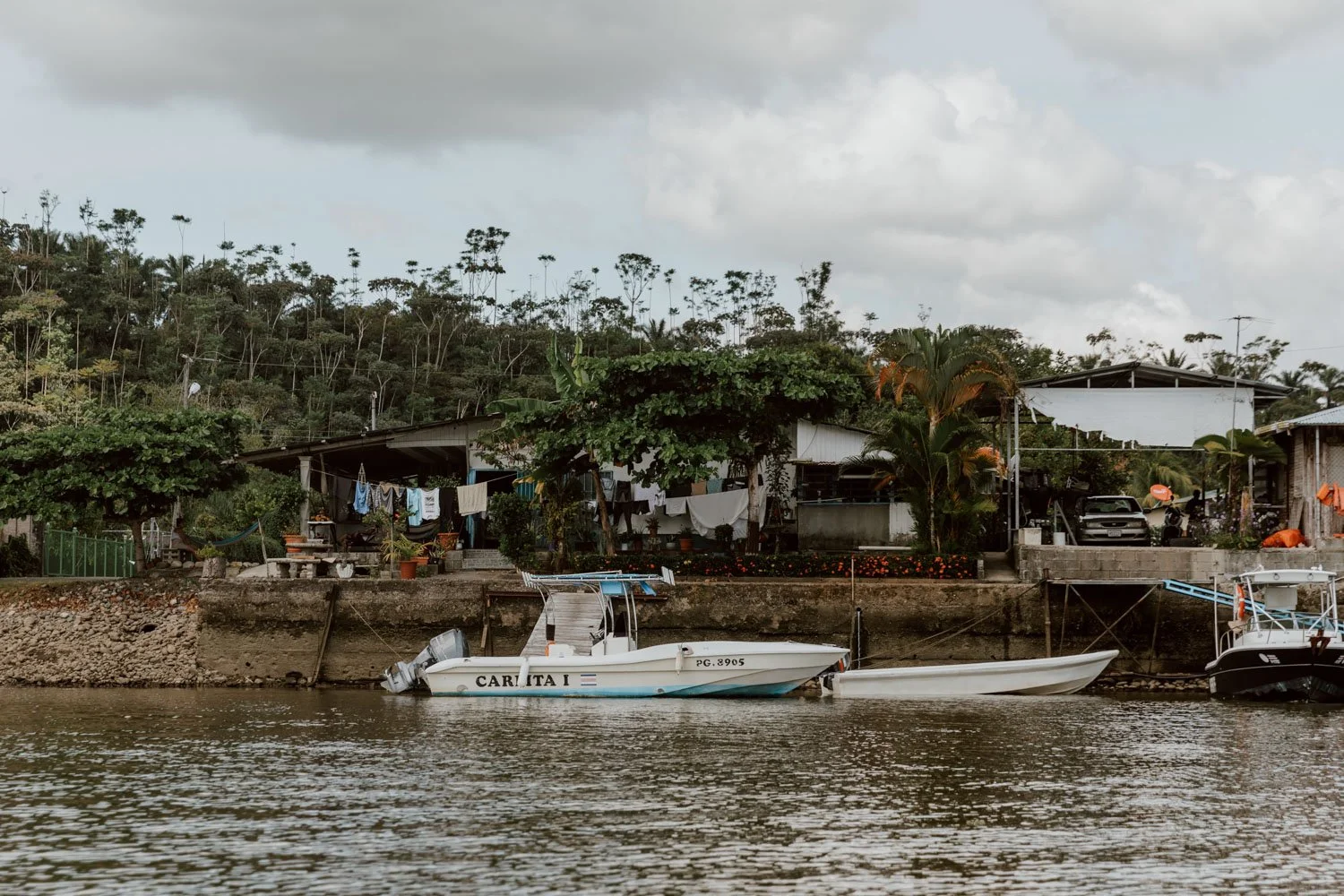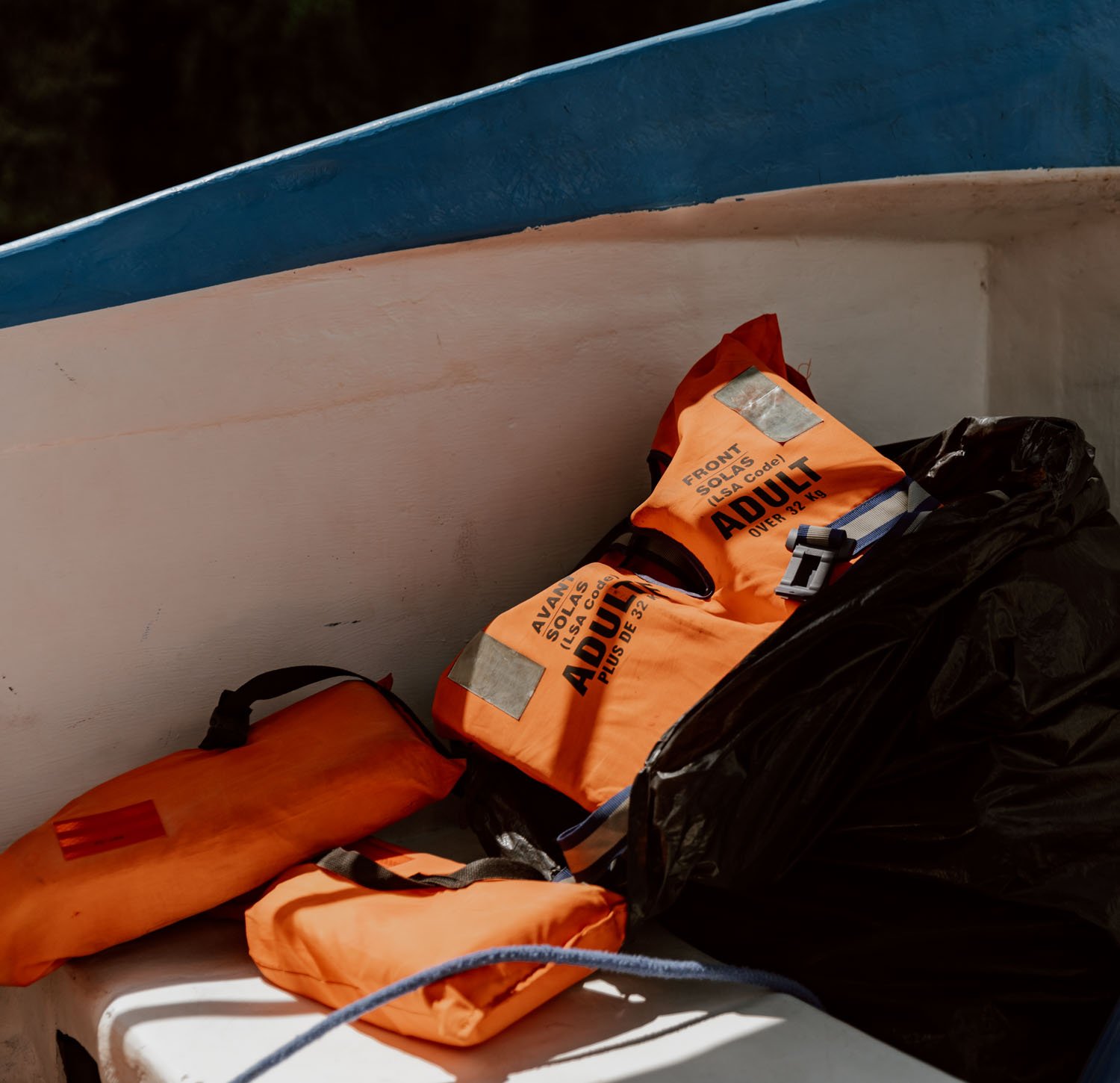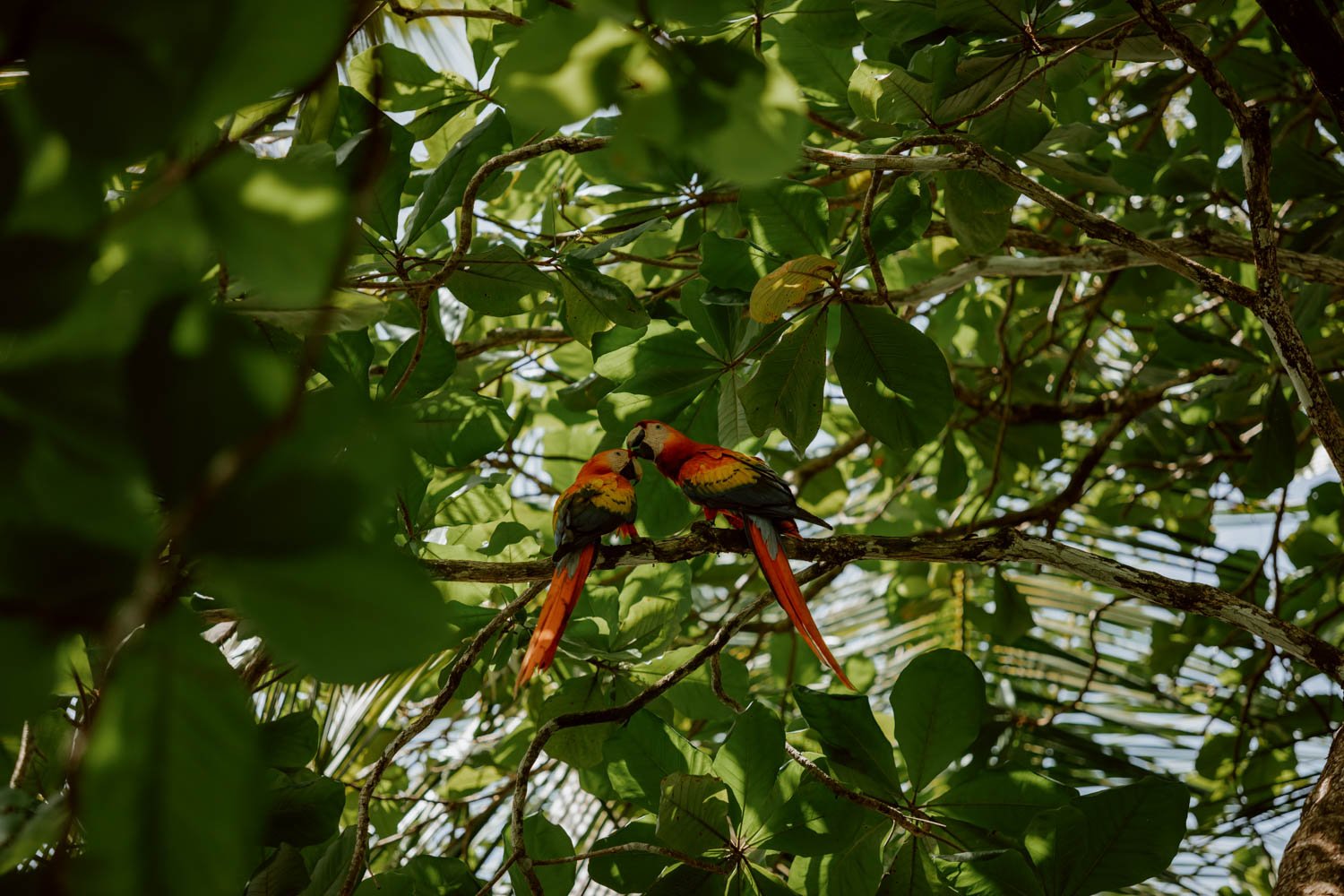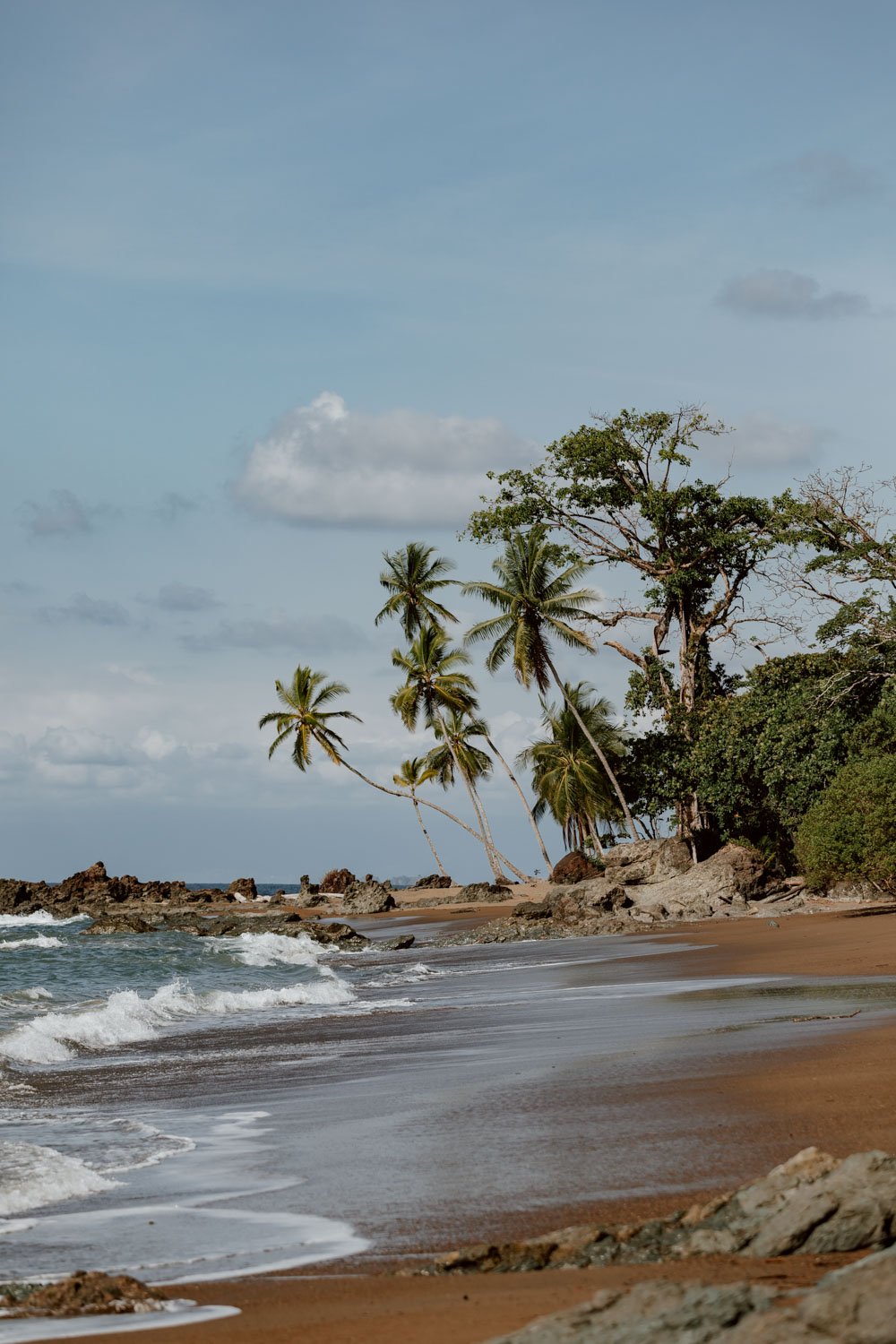Planning to visit Drake Bay in the remote Osa Peninsula? Excellent decision - we’ve shared all the key details and advice to help you plan ahead, wherever you’re starting out from.
Updated January 2024
You may have read that Drake Bay is exactly the sort of place you were hoping to find in Costa Rica? It is.
You may have read that it's also one of the two main gateways / jumping-off points for Corcovado National Park? It is.
You may have also read that it's very difficult to get to Drake Bay? Well, it is and it isn't.
In this short 'routes' post, we've shared our tips and advice on the costs + best ways to reach Drake Bay.
Situated in the southwest corner of Costa Rica, it's one of our favourite places in the country and gave us a bit of the wild side that we'd long been looking to find. Although it's not as straightforward to reach as other places on the Pacific Coast, it's definitely not as complicated as you may fear.
But yes, the main way to get there is by speedboat through the largest mangrove forest in Central America, so it isn’t exactly hopping on the number 176 bus to Penge.
And that Sierpe to Drake Bay boat that most of you will take to enter it is also a very memorable travel experience all on its own - and probably one of the best value activities you'll find in the country too.
Here's how to get to Drake Bay from Sierpe, Uvita, San José, and a few other places from where you're likely to set off: personally though, we'd suggest spending time in Uvita before or after Drake Bay.
If you're on Costa Rica road trip, you have a decision to make before even thinking about including Drake Bay on your itinerary, and we've included specific advice later in the post. Also, if you're one of the few choosing to take the plane from San José to the tiny Drake Bay airport, we've shared information at the end of the post (but we'd encourage a travel slow approach with public transport instead).
Travel Better // Plan ahead with 13 Wonderful Things To Do In Drake Bay
The Sierpe BOAT to Drake Bay
There's no bus to Drake Bay as the road access is very limited, so most of you will be taking that boat from Sierpe.
You don't need to buy or book tickets in advance, but before finalising your plans, you need to shape your journey around one of the two daily departures at 11:30am and 4pm (this is a recently changed time so if anybody can confirm in the comments, we’d be so appreciative!).
The boat we took held about 25-30 people, depending on how much the squeeze in, but from our conversations with the guys working, there will always be space on the boats (or a boat with space). However, the very best way to guarantee yourself a spot and avoid stressing is to arrive 30-minutes to an hour in advance of the departure (especially in the January to April high season).
You can also now buy tickets in advance here on Bookaway.
It's worth noting that the 4pm boat is slightly more expensive at $20 USD* and will give you limited time + light in Drake Bay on arrival, so it's best to aim for the earlier departure if you can.
We've shared more information on where to catch the boats and costs later in the post.
*The 11.30am boat still cost $15USD last year, but may have gone up to $20USD also.
Step one | TAKE A BUS TO Palmar Norte
Wherever you're starting from San José, Uvita, Tamarindo, or Manuel Antonio, all roads lead down the Costanerasur highway to a place called Palmar Norte (Google Maps).
This is where most of you need to go in order to travel onward to Sierpe.
Here's what you need to know on costs, connections, and transport options:
Palmar Norte from Uvita
From Uvita, there are buses to Palmar Norte at 5.15am and 8.30am; both should get you there in time for the 11.30am boat.
We caught it on the side of the highway from the stop beside the vets and opposite the Gallo (here on Google Maps), but ask your accommodation if there's a closer place to save you a wasted walk.
As we had several early rises up to this point - 'Tico time' is one of the biggest changes you’ll have when you visit - we gave ourselves the rather indulgent slumber until 7am before grabbing breakfast and walking down the hill from our accommodation at Cascada Verde.
However, this meant we’d definitely miss the morning local bus connection from Palmar Norte to Sierpe. We weighed up the pros (save money) and cons of this (walking in the dark, longer time waiting in Sierpe for the 11.30am boat with only one restaurant option), and decided that it was better to have lie-in and pay the $15 USD for a taxi from Palmar Norte, than catch the earlier bus and just wait around for a few hours on the other side.
Whichever bus you opt for, it’s a good idea to arrive 15 minutes early as buses in Costa Rica often turn up a little earlier or a bit later, so you've got to butter both sides of your bread.
Find out more in 23 Things To Know Before You Visit Costa Rica (published soon)
The bus cost 3,150 colones each, paid to the driver. It's best to have small change for this, and pop your bags on at the back side door. Travel time from Uvita to Palmar Norte was 90 minutes.
An alternative option is to take the TRACOPA bus from the main bus station in Uvita (maps), which also takes about 90 minutes to arrive in Palmar Norte; some services actually continue on to Sierpe too.
For example, the 12.30pm TRACOPA bus from Uvita is scheduled to arrive in Palmar Norte at 2pm and Sierpe at 2.30pm. Theoretically, this should see you arrive in good time for the 3.30pm boat, but note that this bus is travelling all the way from the capital city of San José, and there is a strong chance of delays. I have read some reports online of the second and final boat sometimes leaving at 4.30pm, which would make sense if they're waiting for a bus load of locals + visitors to arrive on this bus, so do let us know if you have a positive experience!
Note that the TRACOPA bus is quite a bit more expensive than the one we took in the morning and the earliest departure is at 9.43am, meaning it would be highly unlikely that you would make the 11.30am boat to Drake Bay.
Find schedules and ticket information on the TRACOPA website.
San José TO PALMAR NORTE
The journey from the capital city of San José to Drake Bay is possible in a single day, but will this be a long travel day overall. We would instead suggest breaking it up with a couple of nights in Uvita: the beach town is famous for whale-watching, is ideal for a day trip to the impressive Nauyaca Waterfalls, and has paradise beaches in its national park.
Find out more in 13 Wonderful Things To Do in Uvita.
From San José, it’s the same TRACOPA bus as above, with departures starting at 5am. The Cerro de la muerte route involves many more stops than the Costanera route, but both are scheduled to take around 5.5 - 6.5 hours. Some services carry onto Sierpe, but most will only bring you to Palmar Norte.
The 11.30am Drake Bay boat will only be possible if you make one of the earliest departures from San José, and everything goes well along the way. Personally, it would be too tight for our preference (and entail three to four hours hanging around in Sierpe if you miss it), so perhaps it's best to grab a later bus and aim for the 3.30pm boat.
Remember, there isn't a single bus terminal in San José, so you need to go to the Tracopa specific station - here on Google Maps.
There may also be some San José to Sierpe shuttle companies around, and feel free to share in the comments if you have one you can recommend from personal experience!
-> Travel better with our guide to the best things to do in San José
Palmar Norte from Manuel Antonio / Quepos
At time of update, the only option is an 11.30am TRACOPA bus from Quepos terminal, which is scheduled to arrive in Palmar Norte at 2pm and Sierpe at 2.30pm. As above, this bus is the 8.30am departure from San José, so those arrival times need to be taken with a pinch of salt.
This post on Medium shares an alternative route from Manuel Antonio / Quepos to Sierpe which may be of interest if you're doing this journey. Again though, it's only possible to catch the afternoon boat with it.
There may also be some shuttle companies around or other route options, and feel free to share in the comments if you have one you can recommend from personal experience.
-> Travel better with our guide to Manuel Antonio National Park
step two | Travel From Palmar Norte to Sierpe
From Palmar Norte, the quickest and easiest way is to take a private or shared taxi to Sierpe. There is also a small local bus between the two for a dollar, which we took on the return leg, but the bus is less convenient for some bus/boat connections.
TAXI
The best spot to get off the bus is just outside the town (here on Google Maps) where the taxi drivers tend to wait on the side of the road for bus passengers looking to connect with Sierpe.
You’ll have to keep an eye out and probably call out for the stop, which is why it's a good idea to let the driver know you’re ultimately heading to Sierpe when you board.
There were five taxis waiting by the side of the road when we arrived, and we agreed a price of 9,000 colones / $15 USD. He originally said $20 but we had been advised it was $12-15 USD, so there may be a bit of haggling involved (don’t take the piss though and always be respectful in your negotiations).
As it's quite a lot already for a 20-minute taxi ride, if you're a solo backpacker we recommend trying to join others heading the same way (also best from a safety point of view).
A bunch of backpackers stayed on until Palmar Norte, where you can also take a taxi onward to Sierpe. It adds about 5-10 minutes to the journey, and so the taxi may be slightly more than we paid - let us know in the comments if you do this and any tips for other travellers!
Just make sure you don't continue on to Palmar Sur, as that's adding even more time on.
BUS
We took the bus from Sierpe to Palmar Norte on the return trip, and managed to find a timetable for you!
Palmar Norte to Sierpe | 5am, 6.30am, 8am, 9.30am, 11.30am, 2.30pm, and 5.15pm
Sierpe to Palmar Norte | 5.30am, 7.15am, 9am, 10.30am, 1.30pm, 4pm, and 6pm
It costs $500 colones each (cash to the driver), travel time is about half an hour, and we THINK the pick-up spot is here on Google Maps in front of the Gollo shop. That’s where we got dropped off and saw passengers get on later*
Based on the current schedule, you’d have to arrive in Palmar Norte before 9.30am to make the 11.30am boat.
If that’s going to be a pain in the arse due to your start point or you find yourself running short on time for the next boat, it's best to just jump in a colectivo or private taxi.
* If you find the local bus schedule has changed or have more accurate pick-up spot details in Palmar Norte, please let us know in the comments or send over an e-mail! We like to keep these posts as relevant and up-to-date as possible for travellers, and it depends on travellers like you to help us.
step three | The Boat from Sierpe to Drake Bay
The taxi will drop you off outside Donde Jorge restaurant (maps), whilst the local bus drops you off a short walk away by the public square.
The restaurant also doubles up as the boat terminal, and several guys will be outside and ask for your hotel/hostel in Drake Bay and then sit you down at a table. The set-up can feel a bit chaotic but there is a system in place, despite information perhaps being a bit unclear when you arrive. They don’t ask for your name or any other details.
The guys may also help with your bags, but we recommend keeping them with you at the table until they're actually being loaded up on the boat, as a mix-up didn’t feel beyond the realms of possibility.
The boat dock location may also be referred to as Hotel Oleaje Sereno, but it's right next door to Donde Jorge; both are easy to find as Sierpe is very small, and most activity centres around the boats.
You don’t have to buy anything at the restaurant, and note the prices for food do not include service + tax. It does however have plenty on offer if you want breakfast or lunch, or you can grab a fresh coconut from the friendly guy outside and wait for further information.
Payment is taken on the boat, so no money has to change hands at this stage.
The reason they ask for the name of your accommodation in Drake Bay is so they can lump you into the same boats, and also know if you need to stay on the boat after the first stop, make an onward boat connection, or meet someone on on arrival.
When the boat arrives in Drake Bay, some accommodations collect / greet you on the beach, some have a vehicle to pick you and your bags up, and others don’t have anything so you just have to walk.
Find out more + the best places to stay in our travel guide to Drake Bay.
If you have an Airbnb, note that they won’t know its location so it’s good to ask your host in advance what to say or just mention a place near by on the map (if it's in the main village of Aguajitas, just get off at the main beach).
When they start calling out for passengers to board, it’s by hotel / hostel name, so pay close attention, but they’ll ask you again on the boat to make sure you’re on the right one (but if not, it won’t be too grave an issue as they all stop at the same beach in Drake Bay).
If they haven't taken your large bag already, they should come up and in the restaurant around 11am, but they may not do this (so again, pay attention to make sure your bag makes it on).
You pay on the boat after departure, cash only in dollars or colones. It was 9,000 / $15 USD per person for the 11.30 am boat, but the 4pm boat from Sierpe is always more expensive at $20 USD per person*. If you pay in dollars, you'll likely get change in colones, so have an idea of exchange rates beforehand to check your change (but it's best to just pay in colones).
Note that if you are going beyond the main village beach with the boat, then the price may be slightly more than the above. You can also book tickets here on Bookaway.
Our boat left at about 11.40am with lots of things having to be rearranged to get a balance. Larger luggage and backpacks are stored at the front of the boat, but you should keep your daypack on your person to save it from getting wet, as much as from a security perspective. If you've got a massive daypack, they may insist it goes in the hold.
It's a very pleasant, fun ride along the Sierpe River with the palm trees on one side, the mangrove forest on the other, and a few local fishermen plying their trade in small boats. There's a lot of speed, a few bumps once you're on the ocean, and a few stomach-churning turns along the way, but by no means was it the roughest boat trip we've taken in Latin America.
In Costa Rica, where they like to charge for any nature activity, it wouldn't be unusual for a company to charge $50 USD for this as a 'tour', so it's also a bargain.
Travel time from Sierpe to Drake Bay is about 90 minutes.
*From research, it appears that the boats runs every day of the year at the same times, even holidays, but if the schedule ever changes, please let us know in the comments so we can update.
Additionally, it appears that these prices may well have increased in the last couple of months; if you discover this please do leave a note in the comments.
step four | Arrival in Drake Bay
The 'dock' is just the beach, and the boat doesn't pull right up on the sand, so you have to be really cautious exiting. The waves don't stop, so the boat banks and shifts quite a lot, so sure footing, timing, and balance is key; take your shoes off and follow the advice of the guys.
They have their own system for unpacking backpacks and suitcase, depositing them on the sand for you to collect, so just let them do their thing.
Absolutely do not try to disembark at the same time as taking your big bag off with you - an older traveller insisted he could, had a bad fall into the water, everything he owned goat soaked, and he only avoided really serious injury from the bobbing boat due the quick actions of a few of us pulling him out.
Your arrival point is the main beach in Aguajitas, the central village of Drake Bay, and from here most of you will get off to walk or take a short ride to your accommodation. For some of you staying in more luxurious, secluded lodges - or harder-to-reach hostels - you may have to stay on the boat, take an onward boat or car journey arranged by your hotel, jump on the taxi boat, or do a decent walk along dusty roads. Again, we recommend clarifying this in advance of arrival with your accommodation - we stayed at Casita Happy Feet in the village, which was a modest but perfectly good locally-run guesthouse, so just had to walk.
To find more information + inspiration for Drake Bay, plus our pick of the best places to stay for all travel styles and budgets, check out 13 Wonderful Things To Do in Drake Bay
If Corcovado is in your plans, then you absolutely should read our guide to visiting Corcovado National Park
Driving To Drake Bay
It is generally not recommended to drive to Drake Bay with a rental car as the unpaved roads are challenging, liable to flooding and mudslides, and involve river crossings.
Road trippers we spoke to in Drake Bay had by and large chosen to leave their rental car in Sierpe, but there were a few rugged 4x4s there too, so some clearly make the journey part of the adventure. We would recommend doing further research into this though, and only doing it in dry season with a 4x4 and the necessary experience to know how to take on the unpredictable roads.
Also, check your rental terms + exclusions: find out more in 9 Essential Car Rental Tips for Travellers
In rainy season, it sounds like it would be foolish to even think about thinking about attempting to do it unless you've got time on your side, your own 4x4, experience, and a very good insurance policy.
If you've already got a rental car and your heart is set on visiting Drake Bay and Corcovado, you have three options:
1. the main alternative is to leave the car parked at Oleaje Sereno in Sierpe, right by the boat departure point, for $6 per day. There are also other places you can pay to park in the town. This would obviously increase the overall costs of your Costa Rica road trip as the car's out of commission for several days, but at least allows you to take the boat with confidence.
2. some car rental companies will collect the car in Sierpe for an extra fee, so you can just save this portion for the end of your road trip and take public transport afterward. Not ideal though.
3. if your main purpose for visiting Drake is to actually go to Corcovado National Park, then you could make a complete change to your route, and instead drive to Puerto Jiménez on the eastern side of the Osa Peninsula. This town is also the alternative jump-off point for Corcovado tours and experiences, and accessible by road.
Find out more in our guide to visiting Corcovado.
What About Flights To Drake Bay Airport?
We would suggest, from an environmental perspective as well as a travel experience, that taking the boat from Sierpe to Drake Bay is a much better option.
Drake Bay does however have a tiny airport, and there are several daily flights from San José to Drake Bay.
Operated by Fly Sansa, travel time is 50 minutes and it looks like all flights are one 10-seater micro planes, arriving into the tiny Drake Bay Airport. Departures are less frequent in low and rainy season.
At time of update, prices are $165 USD one-way.
Summary | Travel To Drake Bay
1 / Catch a bus to Palmar Norte (or direct to Sierpe) | 90 minutes to 6 hours
2/ From Palmar Norte, take a local bus or taxi to Sierpe | 25 minutes
3/ Catch the 11.30am or 4pm daily boat from Sierpe to Drake Bay | 90 minutes
4 / Arrive in Drake Bay at 1pm or 5pm
Total travel costs range from $20 USD per person if taking the cheapest route from Uvita, but could increase to $45 depending on start point, bus chosen, taxi, and if your boat costs $15 or $20 USD.
Where to Next?
13 Wonderful Things to Do in Drake Bay | The Wild Side of Costa Rica
Visiting Corcovado National Park | A Complete Guide
13 Wonderful Things to Do in Uvita
7 Things to Know Before Visiting Manuel Antonio National Park
How to Visit Nauyaca Waterfalls | An Unmissable Place in Costa Rica
The Best Things to Do in San Jose, Costa Rica
The Very Best Things To Do In Monteverde, Costa Rica | A Traveller’s Guide




